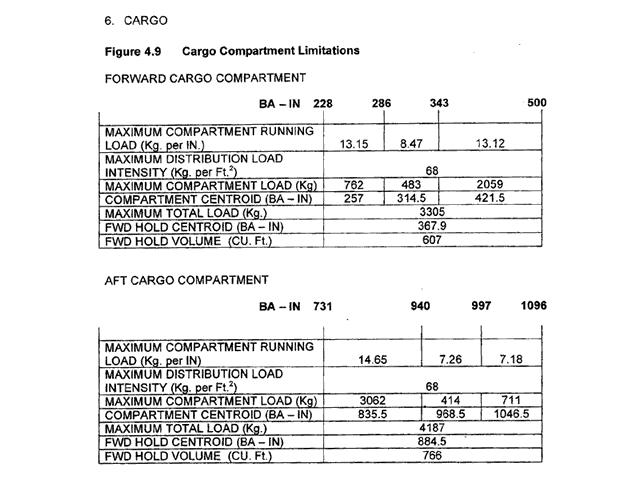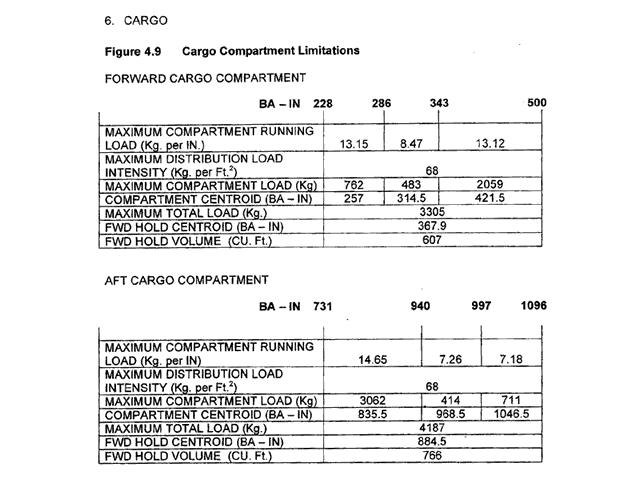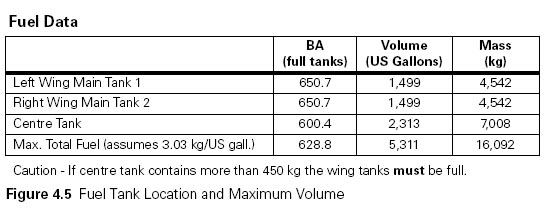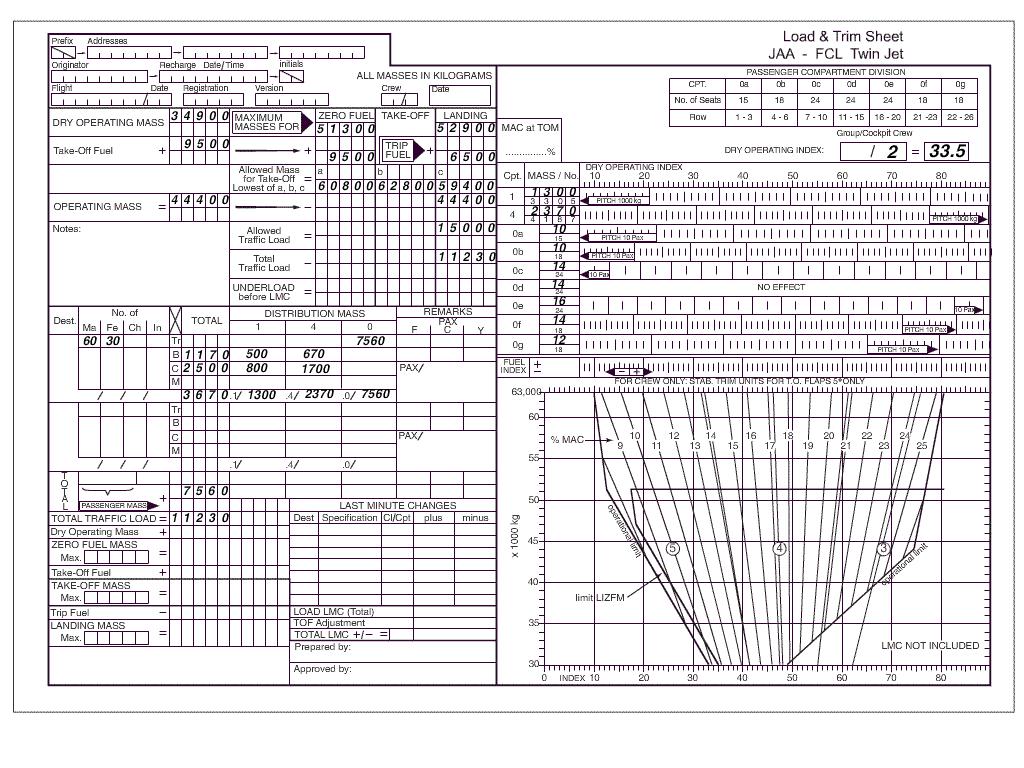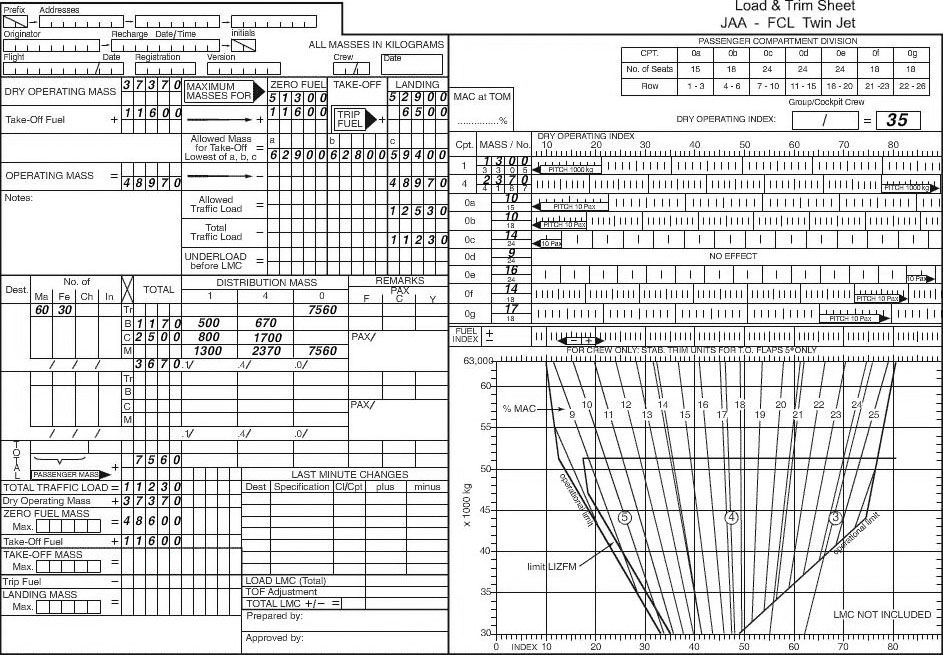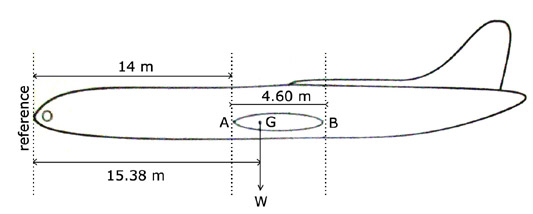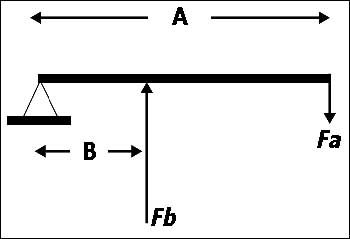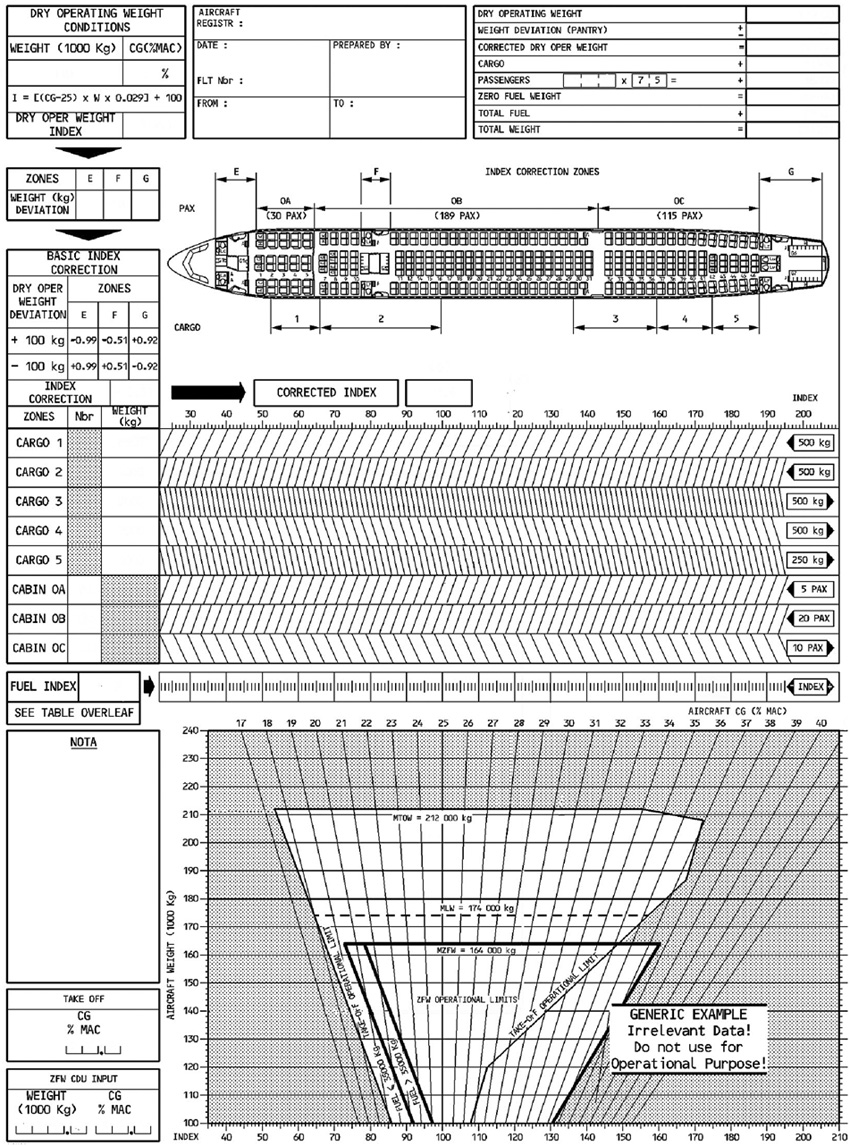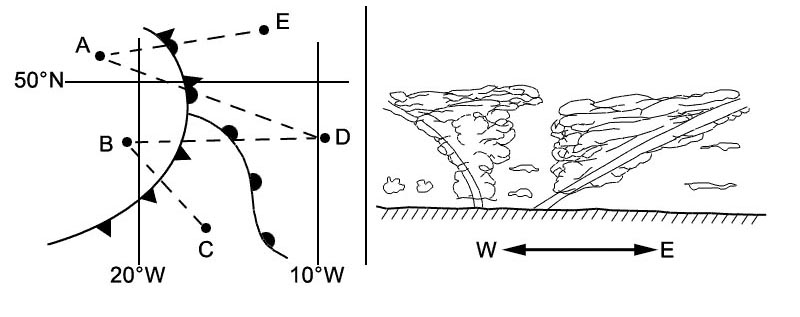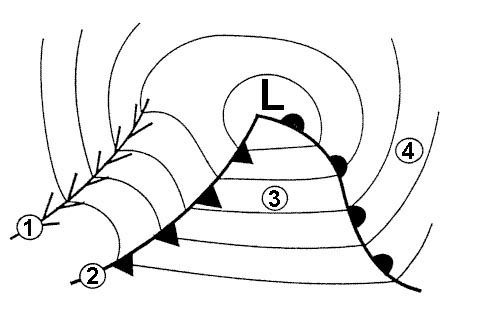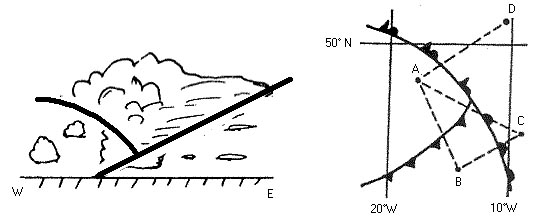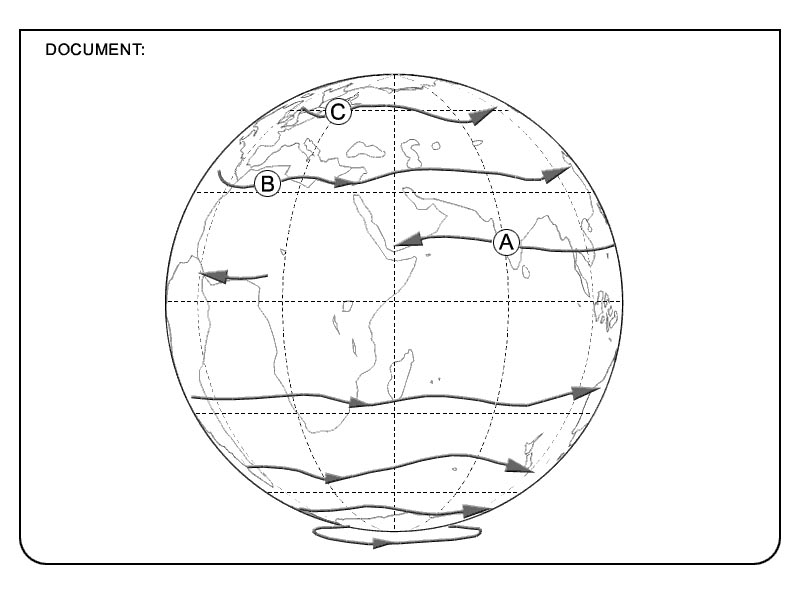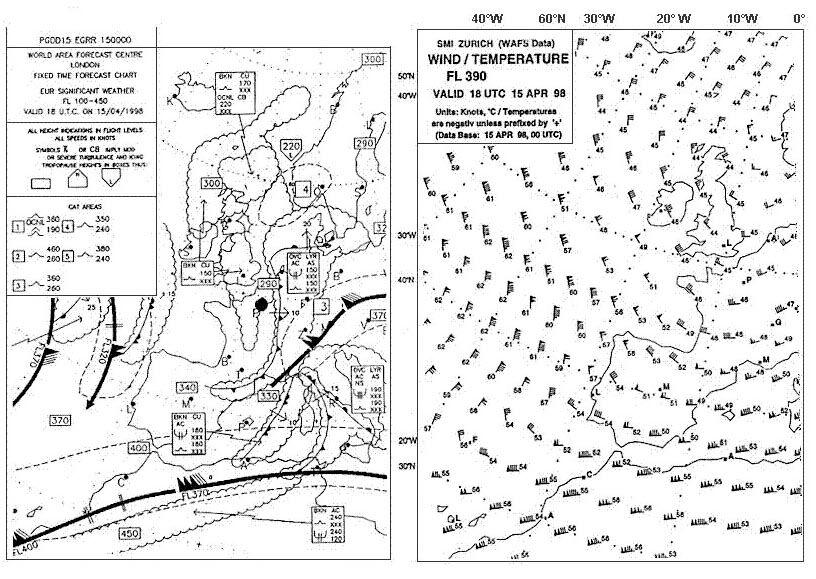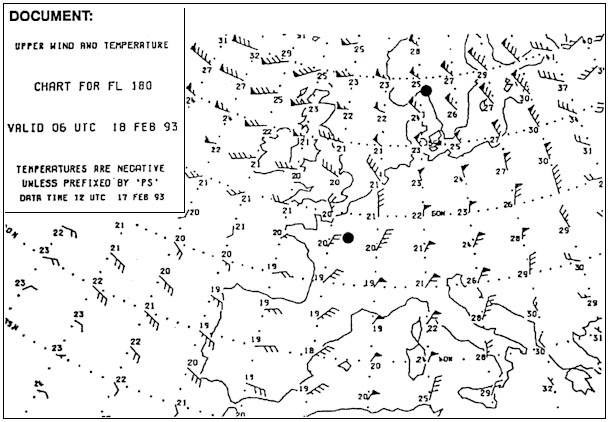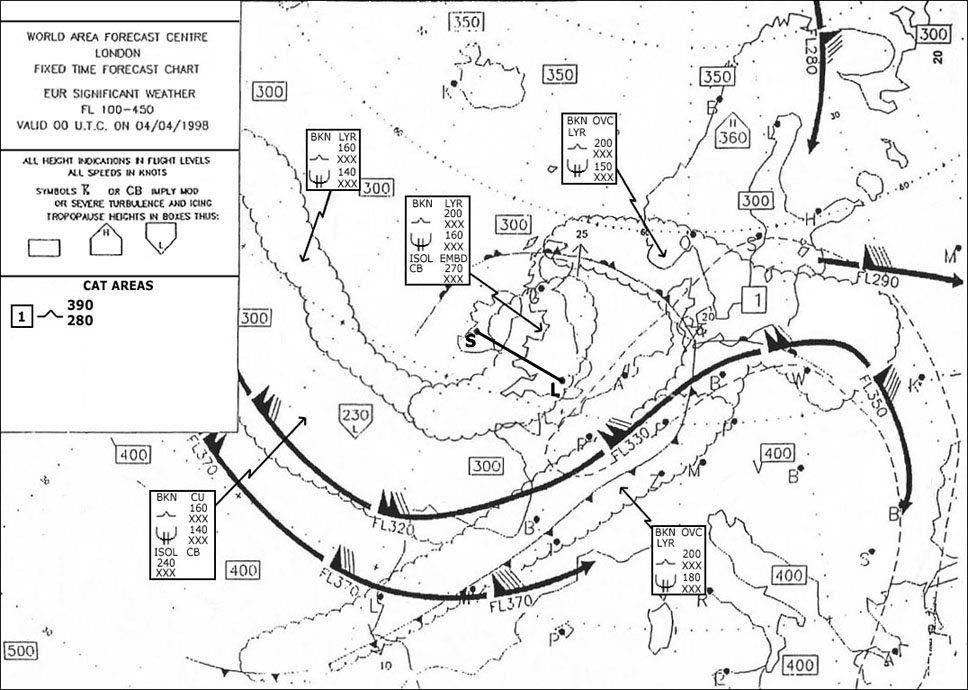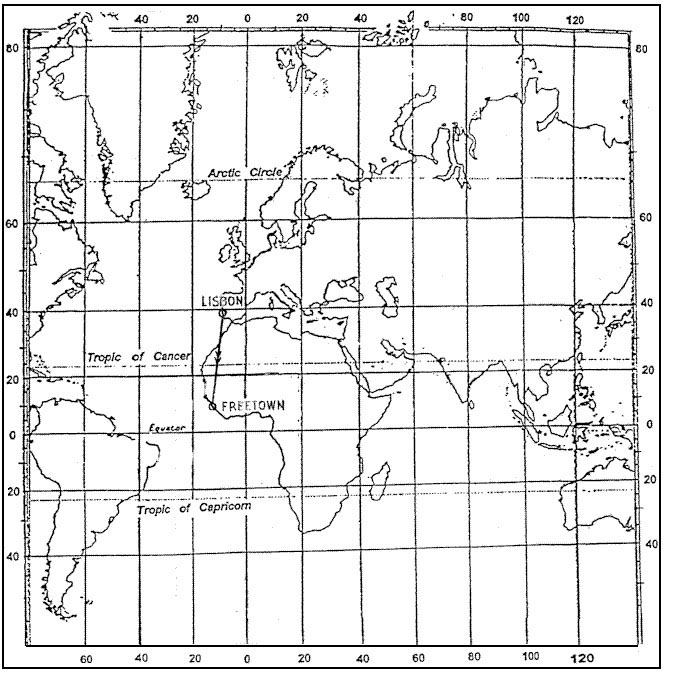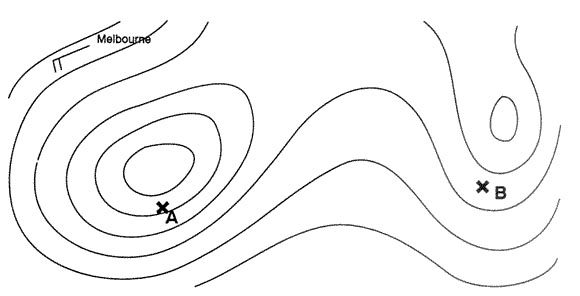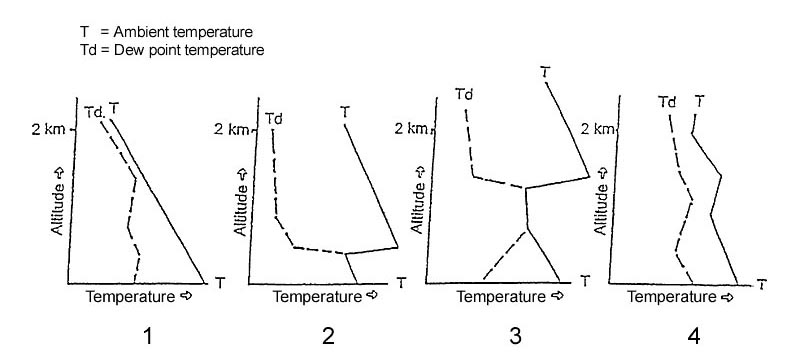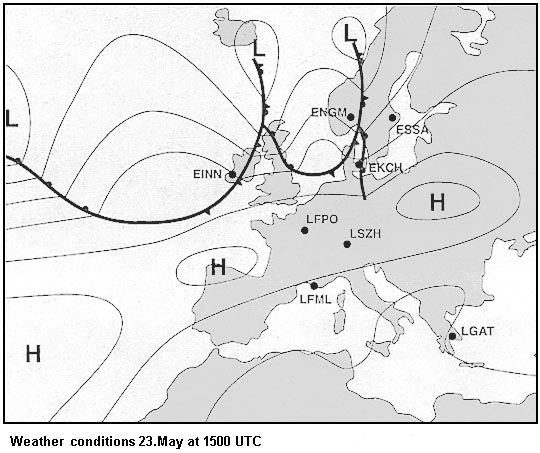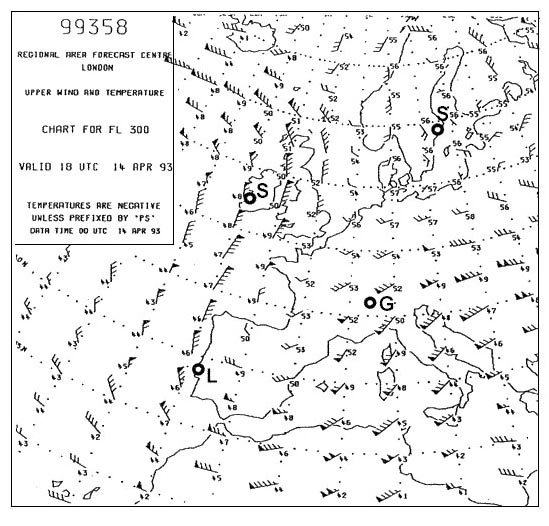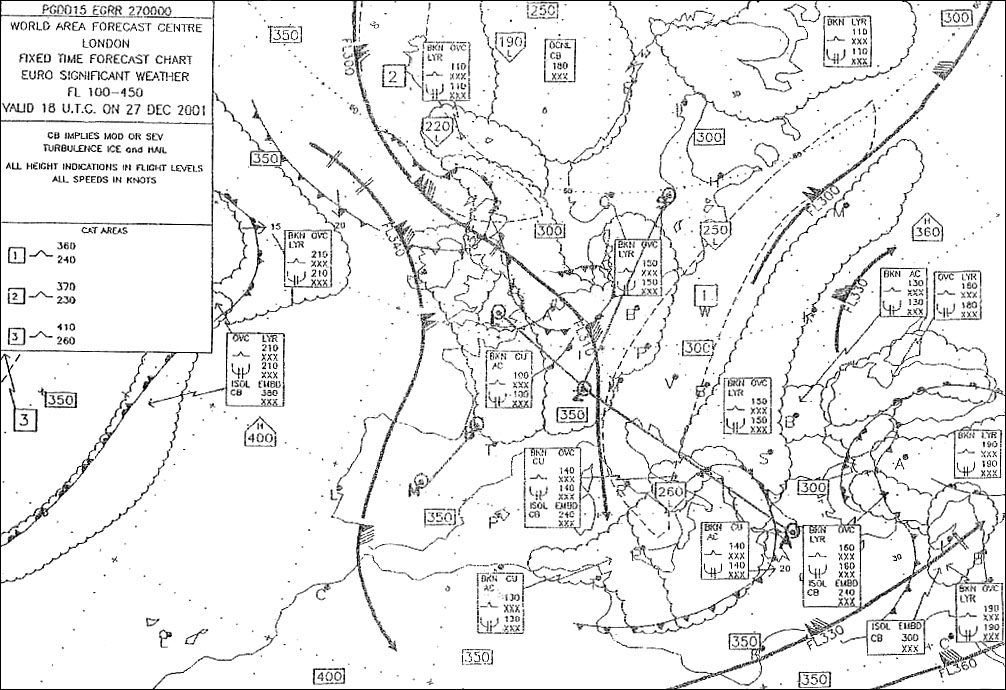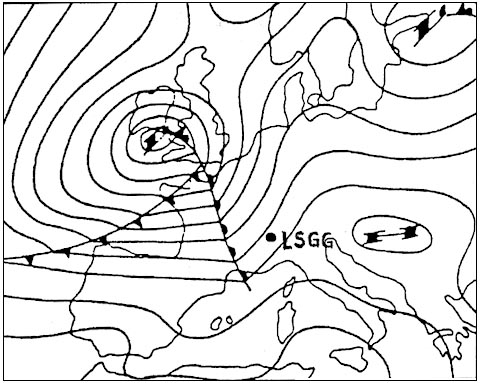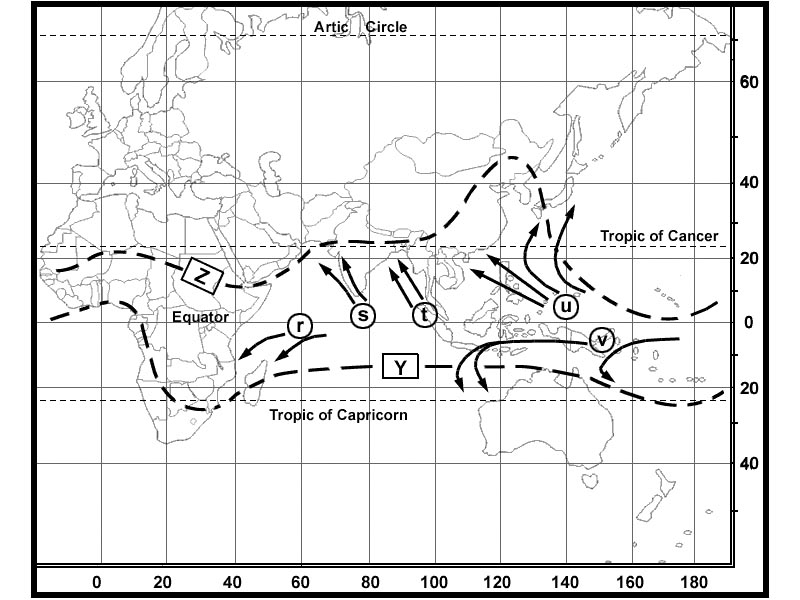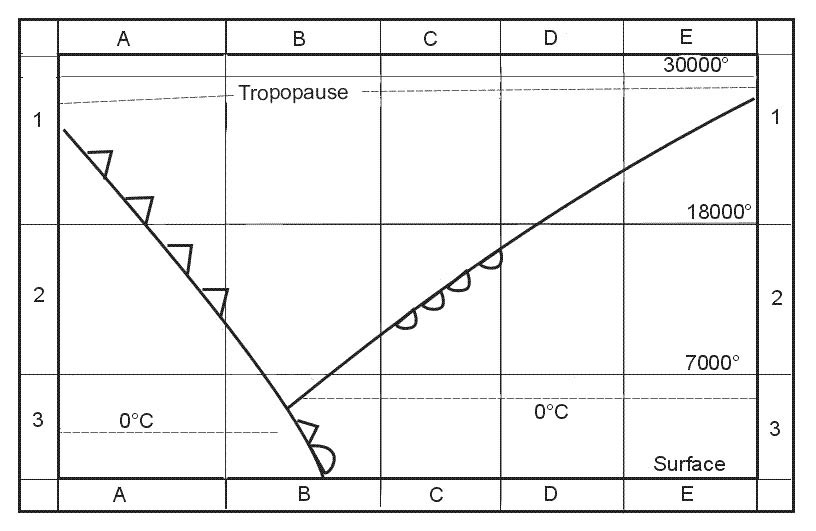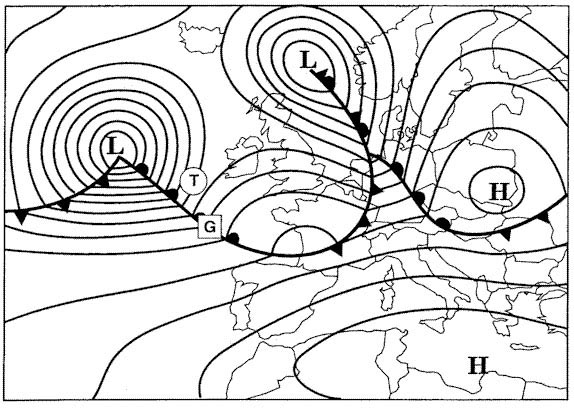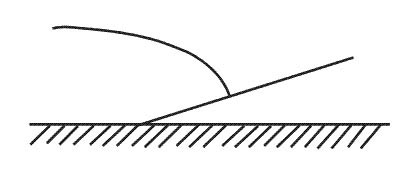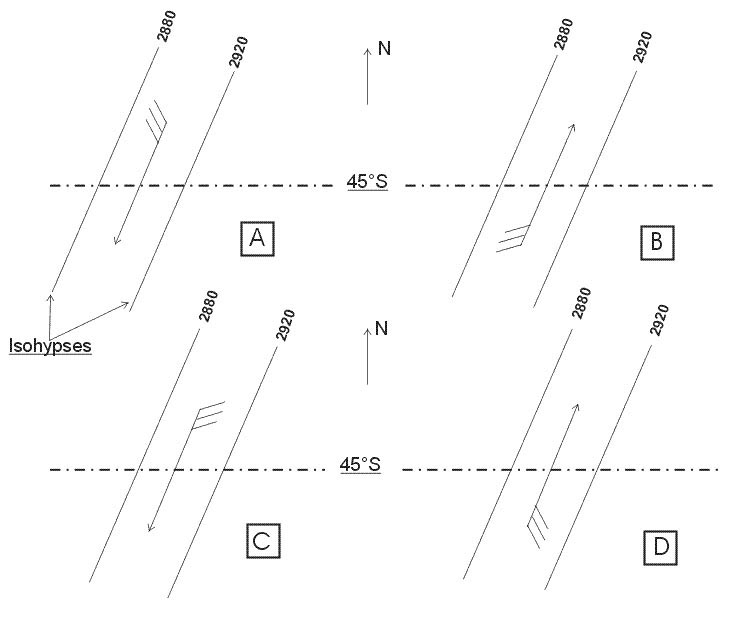Question 110-1 : The navigation plan reads .trip fuel 100 kg.flight time 1h35min.taxi fuel 3 kg.block fuel 181 kg.the endurance on the icao flight plan should read ? [ Training professional ]
Question 110-2 : You have a flight plan ifr from amsterdam to london in the flight plan it is noted that you will deviate from the ats route passing the fir boundary amsterdam/london .the airway clearance reads cleared to london via flight planned route .which of the following statements is correct ?
Question 110-3 : In the atc flight plan item 13 in a flight plan submitted before departure the departure time entered is the ?
Question 110-4 : Given .planned and actual data as shown in the flight log excerpt .arriving overhead gamma you are cleared for direct routeing to mike the flight time for direct flight gamma to mike will be 1 h 08 min assuming other flight data remains constant what fuel will be expected on arrival overhead mike . ?
Question 110-5 : A turbojet aeroplane flies using the following data .flight level fl 330.flight regime 'long range' lr .mass 156 500 kg.tailwind component at this level 40 kt .with a remaining flight time of 1 h 10 min the ground distance that can be covered by the aeroplane at cruising speed is . err a 033 2 ?
Question 110-6 : Given .true course tc 017°.w/v 340°/30 kt.true air speed tas 420 kt.find .wind correction angle wca and ground speed gs ?
Wca 2° gs 396 kt
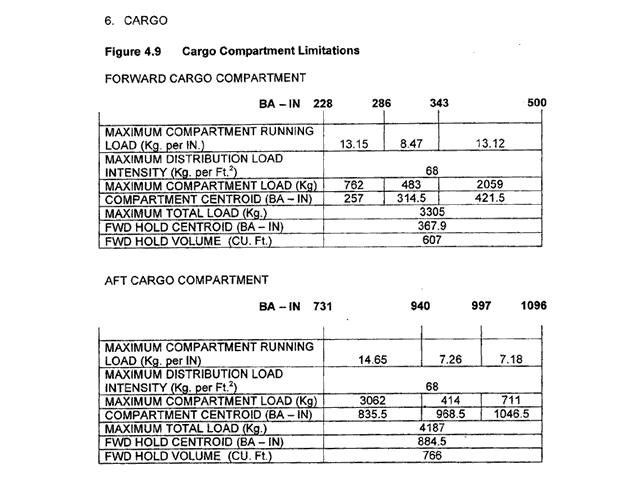
Question 110-7 : The true course is 042° .the variation in the area is 6° w and the wind is calm .the deviation card is reproduced in the annex .in order to follow this course the pilot must fly a compass heading of . err a 033 41 ?
Question 110-8 : At reference or see flight planning manual mrjt 1 figure 4 3 5 .given a trip time of about 9 hours within the limits of the data given a temperature decrease of 30°c will affect the trip time by approximately . err a 033 67 ?
Question 110-9 : At reference or see flight planning manual mrjt 1 figure 4 5 4 .planning an ifr flight from paris to london for the twin jet aeroplane .given .estimated landing mass 49700 kg.fl 280.w/v 280°/40 kt.average true course 320°.procedure for descent 74 m/250 kias.determine the distance from the top of ?
76 nm
Question 110-10 : At reference or see flight planning manual mrjt 1 figure 4 7 3 .given .diversion distance 720 nm.tail wind component 25kt.mass at point of diversion 55000kg.temperature isa.diversion fuel available 4250 kg.what is the minimum pressure altitude at which the above conditions may be met . err a 033 76 ?
Question 110-11 : Flight planning chart for an aircraft states that the time to reach the cruising level at a given gross mass is 36 minutes and the distance travelled is 157 nm zero wind .what will be the distance travelled with an average tailwind component of 60 kt ?
Question 110-12 : At reference or see flight planning manual mrjt 1 figure 4 3 6 .given .distance to alternate 400 nm.landing mass at alternate 50 000kg.headwind component 25 kt.the alternate fuel required is . err a 033 79 ?
Question 110-13 : At reference or see flight planning manual mrjt 1 figure 4 3 6 .given .twin jet aeroplane.dry operating mass 35500 kg.traffic load 14500 kg.final reserve fuel 1200 kg.distance to alternate 95 nm.tailwind component 10 kt.find .fuel required and trip time to alternate with simplified flight planning ?
Question 110-14 : Given .planning data as shown in the flight log excerpt fuel planning section .after a balked landing at the destination airport you have to divert to the alternate airport with the gear extended .the re calculated flight time to the alternate due to the reduced speed is 1 h 10 min and the fuel ?
Question 110-15 : Flight planning chart for an aeroplane states that the time to reach fl 190 at a given gross mass is 22 minutes and the distance travelled is 66 nm no wind .what will be the distance travelled with an average head wind component of 35 kt ?
53 nm
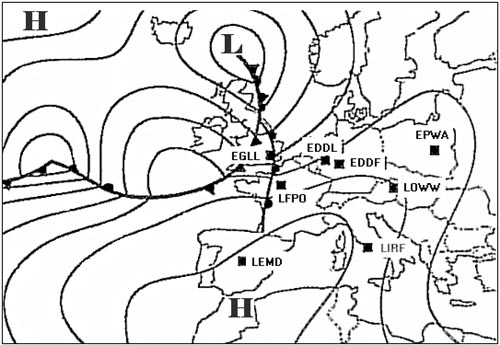
Question 110-16 : At reference or see flight planning manual mrjt 1 figure 4 5 3 1.given twin jet aeroplane.fl 330.long range cruise.outside air temperature 63°c.gross mass 50500 kg.true air speed tas is . err a 033 126 ?
420 kt
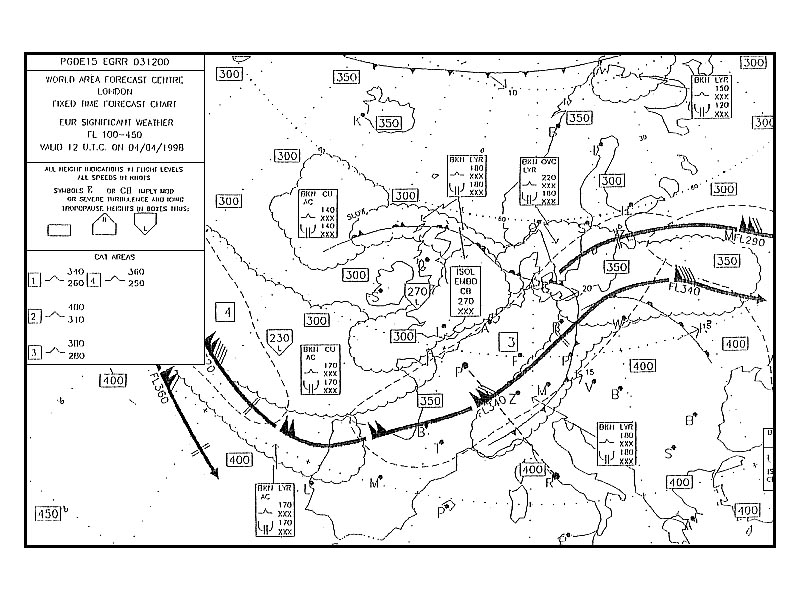
Question 110-17 : At reference or see flight planning manual mrjt 1 figure 4 5 3 1. given long range cruise.oat 45°c at fl 350.gross mass at the beginning of the leg 40000 kg.gross mass at the end of the leg 39000 kg .find true air speed tas and cruise distance nam for a twin jet aeroplane . err a 033 147 ?
Tas 432 kt 227 nam
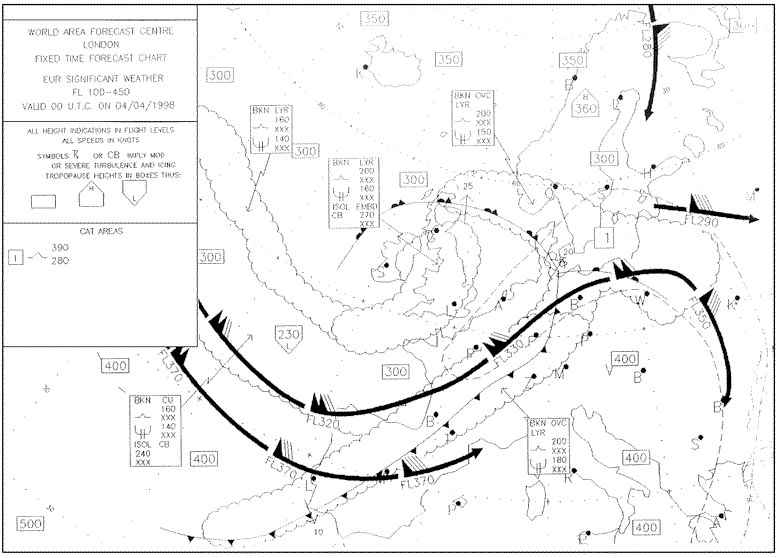
Question 110-18 : During an ifr flight in a beech bonanza the fuel indicators show that the remaining amount of fuel is 100 lbs after 38 minutes .fuel at take off is 160lbs .for the alternate fuel 30 lbs is necessary .the planned fuel for taxi is 13 lbs .final reserve fuel is estimated at 50 lbs .if the fuel flow ?
12 minutes
Question 110-19 : Given .planning data as shown in the flight log excerpt fuel planning section .after a balked landing at the destination airport you have to divert to the alternate airport with the gear extended .the re calculated flight time to the alternate due to the reduced speed is 2h 20 min and the fuel flow ?
Question 110-20 : At reference or see flight planning manual mrjt 1 figure 4 3 1c.for a flight of 2400 ground nautical miles the following apply .temperature isa 10°c.cruise altitude 29000 ft.landing mass 45000 kg.trip fuel available 16000 kg.what is the maximum headwind component which may be accepted . err a 033 ?
Question 110-21 : At reference or see flight planning manual mrjt 1 figure 4 5 3 2. find the fuel flow for the twin jet aeroplane with regard to the following data .given .mach 74 cruise.flight level 310.gross mass 50000 kg.isa conditions . err a 033 171 ?
2300 kg/h
Question 110-22 : At reference or see flight planning manual mrjt 1 figure 4 3 1c. within the limits of the data given a mean temperature increase of 30°c will affect the trip time by approximately . err a 033 172 ?
Question 110-23 : At reference or see flight planning manual mrjt 1 figure 4 3 6. in order to find alternate fuel and time to alternate the aeroplane operating manual shall be entered with . err a 033 173 ?
Question 110-24 : During a vfr flight at a navigational checkpoint the remaining usable fuel in tanks is 60 us gallons .the reserve fuel is 12 us gallons .according to the flight plan the remaining flight time is 1h35min .calculate the highest acceptable rate of consumption possible for the rest of the trip ?
Question 110-25 : At reference or see flight planning manual mrjt 1 figure 4 3 1c.for a flight of 2000 ground nautical miles cruising at 30000 ft within the limits of the data given a headwind component of 25 kt will affect the trip time by approximately . err a 033 190 ?
Question 110-26 : At reference or see flight planning manual mrjt 1 figure 4 3 6.given .distance to alternate 450 nm.landing mass at alternate 45 000 kg.tailwind component 50 kt.the alternate fuel required is . err a 033 191 ?
Question 110-27 : An aeroplane is on an ifr flight the flight is to be changed from ifr to vfr is it possible ?
Question 110-28 : See flight planning manual mrjt 1 figure 4 5 2 and 4 5 3 1 . given .distance c d 680 nm.long range cruise at fl340.temperature deviation from isa 0° c.headwind component 60 kt.gross mass at c 44700 kg.the fuel required from c d is . err a 033 218 ?
3700 kg
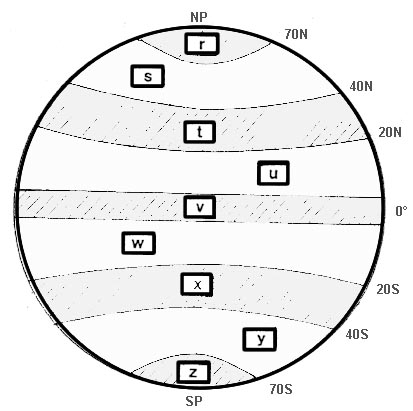
Question 110-29 : Flight planning manual mrjt 1 figure 4 5 4.a descent is planned at 74/250kias from 35000ft to 5000ft .how much fuel will be consumed during this descent . err a 033 220 ?
Question 110-30 : At reference or see flight planning manual mrjt 1 figure 4 7 3.given .diversion fuel available 8500kg.diversion cruise altitude 10000ft.mass at point of diversion 62500kg.head wind component 50kt.temperature isa 5°c.the a maximum diversion distance and b elapsed time alternate are approximately . ?
A 860 nm b 3h 20 min
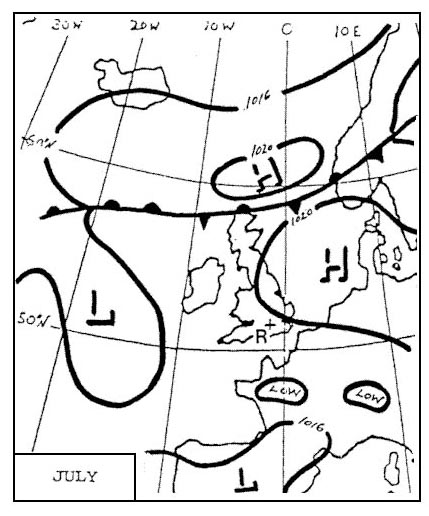
Question 110-31 : For a planned flight the calculated fuel is as follows .flight time 2h42min .the reserve fuel at any time should not be less than 30% of the remaining trip fuel .taxi fuel 9 kg .block fuel 136 kg .how much fuel should remain after 2 hours flight ?
25 kg trip fuel and 8 kg reserve fuel
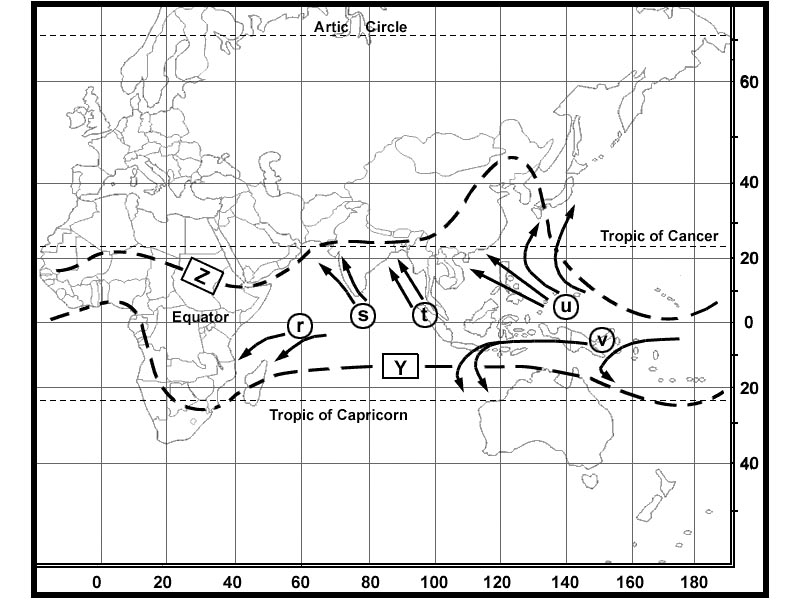
Question 110-32 : An aircraft is flying at mach 0 84 at fl 330 .the static air temperature is 48°c and the headwind component 52 kt .at 1338 utc the controller requests the pilot to cross the meridian of 030w at 1500 utc .given the distance to go is 570 nm the reduced mach required is ?
0 8 m
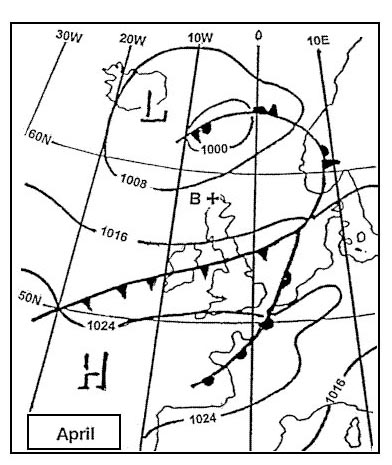
Question 110-33 : You must fly ifr on an airway orientated 135° magnetic with a msa at 7800 ft knowing the qnh is 1025 hpa and the temperature is isa +10°c the minimum flight level you must fly at is ?
Fl90
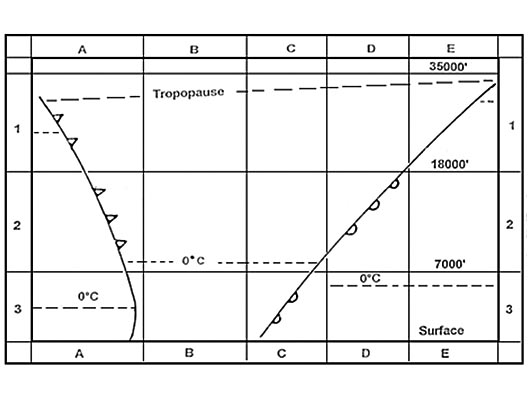
Question 110-34 : An aircraft following a 215° true track must fly over a 10 600 ft obstacle with a minimum obstacle clearance of 1 500 ft knowing the qnh received from an airport close by which is almost at sea level is 1035 and the temperature is isa 15°c .what is the minimum fl the aircraft should fly at ?
Fl 140
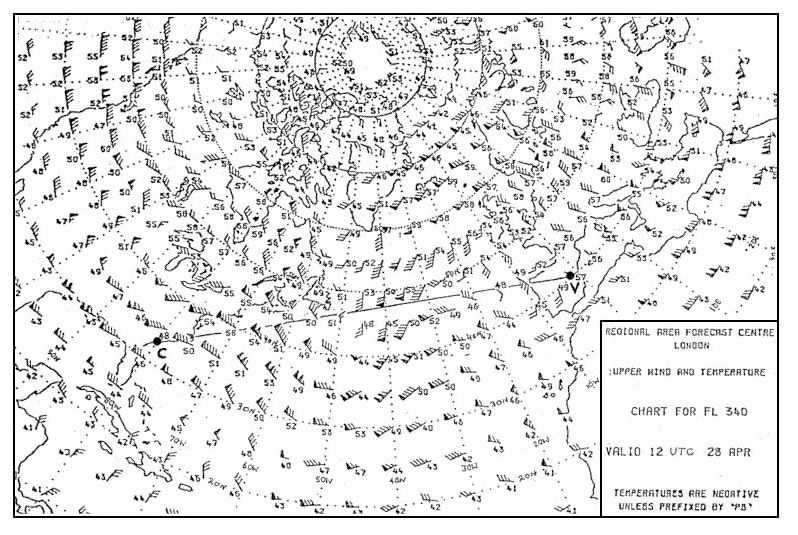
Question 110-35 : Given .dry operating mass 33000 kg .traffic load 8110 kg .final reserve fuel 983 kg .alternate fuel 1100 kg .contingency fuel not used 102 kg .the estimated landing mass at alternate should be ?
Question 110-36 : At reference or see flight planning manual mrjt 1 figure 4 5 4.planning an ifr flight from paris to london for the twin jet aeroplane .given estimated landing mass 49700 kg.fl 280.wind 280°/40 kt.average true course 320°.procedure for descent 74 m/250 kias.determine the time from the top of ?
Question 110-37 : At reference or see flight planning manual mrjt 1 figure 4 4.given .twin jet aeroplane.estimated mass on arrival at the alternate 50000 kg.elevation at destination aerodrome 3500 ft.elevation at alternate aerodrome 30 ft.find final reserve fuel . err a 033 304 ?
1180 kg
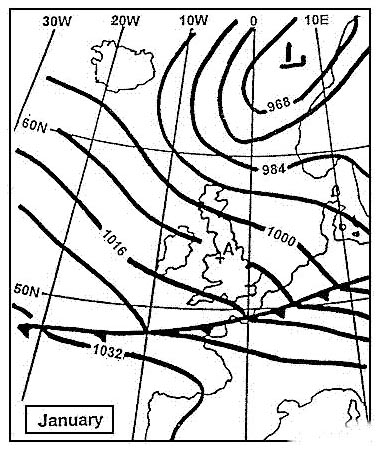
Question 110-38 : Given .planned and actual data as shown in the flight log excerpt .arriving overhead gamma you are cleared for direct routing to mike .the flight time for direct flight gamma to mike will be 1h30 min assuming other flight data remains constant what fuel will be expected on arrival overhead mike . ?
1300 kg
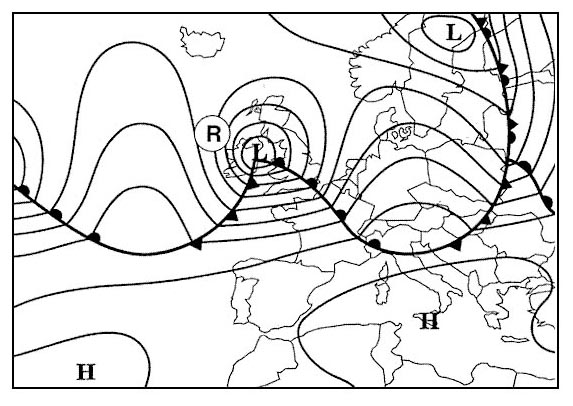
Question 110-39 : Given .planned and actual data as shown in the flight log excerpt .arriving overhead gamma you are cleared for direct routeing to mike .the flight time for direct flight gamma to mike will be 57 minutes assuming other flight data remains constant what fuel will be expected on arrival overhead mike ?
Question 110-40 : Given .fl 370.mach 0 74.oat 47°c.the tas is ?
~
Exclusive rights reserved. Reproduction prohibited under penalty of prosecution.
4359 Free Training Exam

